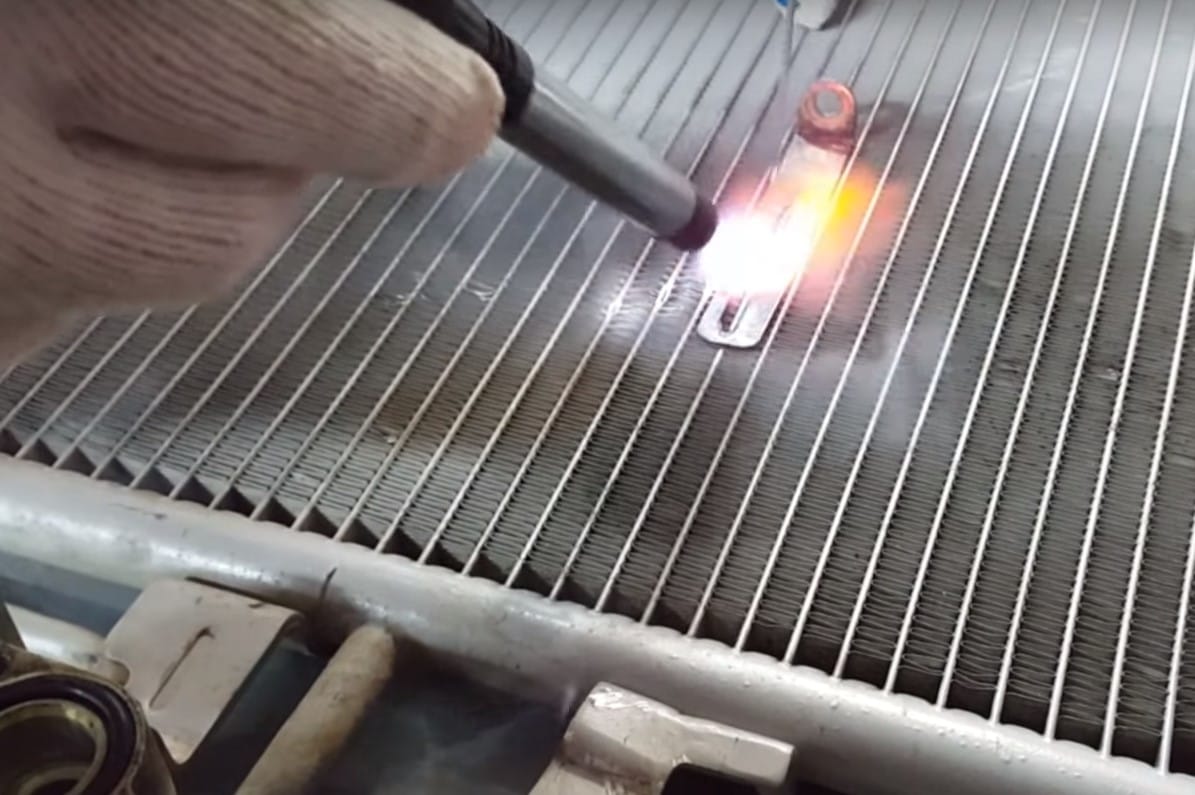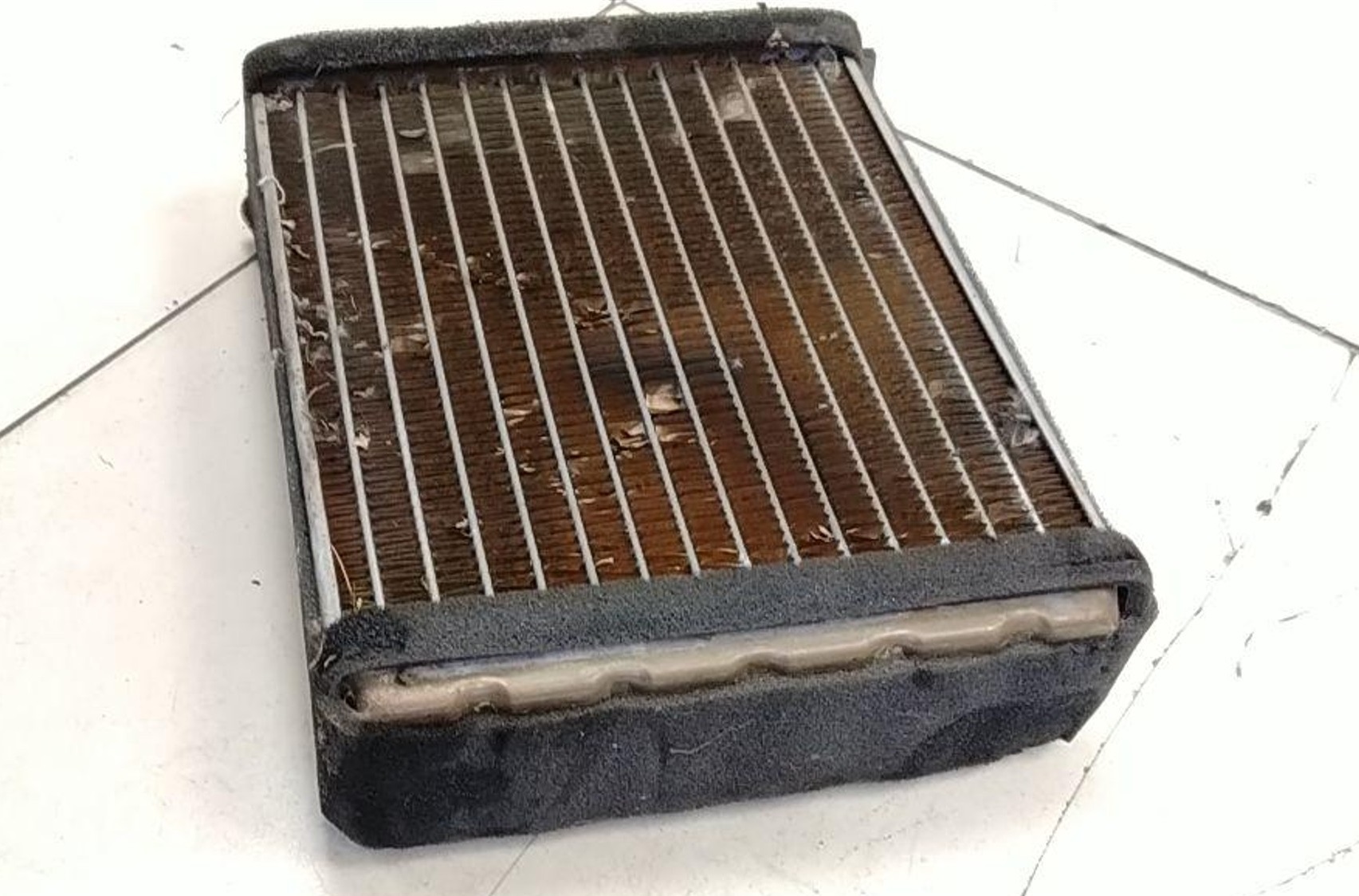
How to solder a stove radiator with your own hands at home
Content
Minor damage to the radiator of a car stove does not require a mandatory visit to a repair shop, however, experts recommend that heavily deformed copper or aluminum grilles be repaired by professionals in a car service, in the most advanced cases, dismantling and subsequent replacement will be the best option.
The stove radiator is one of the components of the vehicle cooling system, the main purpose of which is to prevent overheating of the circulating antifreeze. This process is provided by a fan or a stream of cold air flowing around the front of the bumper when the car is moving.
Long-term operation of the unit without proper care leads to clogging of the grate, corrosion or mechanical damage to individual parts. In these cases, the driver is recommended to solder the car's stove radiator as soon as possible at home or in a repair shop - this will help maintain the equipment's performance and avoid unexpected financial expenses for replacement.
Is it possible to solder at home
Minor damage to the cooling unit does not require a mandatory visit to the workshop - it is really possible to restore the surface of the stove radiator on your own using improvised materials. Heavily deformed copper or aluminum grilles are recommended to be repaired by professionals in a car service, in the most neglected cases, dismantling and subsequent replacement will be the best option.
Is it possible to solder without removing
To restore the surface of the car heater without removal, it is permissible to use specialized mixtures based on chemical components - plavni. You can buy such substances in the online store, as well as cook it yourself at home.
How to solder with your own hands: a step-by-step algorithm
To restore the integrity and functionality of the head unit of the cooling system, the driver will need to follow a certain sequence of actions. The algorithms for soldering copper and aluminum radiators are similar, but each type of repair has its own peculiarities.
Aluminum device
Heaters made of this metal are difficult to process at home - the reason for this is the film of aluminum hydroxide on the surface. It has the ability to recover from mechanical damage, the intensity of which does not exceed the maximum allowable threshold of destruction. This has become the reason for the high popularity of the material and active use in various industries, including the production of stove radiators for cars.
The most common types of fluxes when soldering an aluminum unit in a car service are: NITI-18, 34-A and modifications with similar characteristics. The surface treatment of the structure in the garage is carried out using a two-component mixture based on rosin and crushed metal chips - it allows you to get rid of the oxide film and prevent re-formation.
How is soldering
Before performing the repair procedure, the motorist needs to prepare the following tools and accessories:
- electric soldering iron with a power of 100-150 watts;
- sheets of sandpaper;
- copper wire;
- burner of any type;
- battery;
- solder and flux - a mixture to remove oxides;
- solution of CuSO4 - copper sulphate.

A gas burner is a must-have tool for self-soldering a radiator
The sequence of actions when soldering a do-it-yourself stove radiator from aluminum in a garage:
- Sand the surface of the unit with abrasive materials to remove dirt.
- Pour a small amount of copper sulfate solution to form a spot in the form of a "drop".
- Connect the “plus” of the battery to a wire with a cross section of 1 mm, “minus” is immersed in a “drop”, while it is important to ensure that there is no contact with the surface of the unit.
- After copper settling, careful processing and drying of the damage site, use tinning and the standard soldering method, performed in measured circular motions.
This option is suitable for restoring small areas at home; it is not recommended to use it in the presence of volumetric defects in the heater due to the increased complexity of the process. The flux in such cases hardens at a high speed, which reduces the efficiency of the work.
Soldering using homemade fluxes
One of the most common methods for repairing a heater with extensive deformations is the use of fluxes - mixtures based on chemically active compounds. The step-by-step algorithm of actions in this case is somewhat different. Before starting work, you need to create a mix in certain proportions from the following components:
- potassium chloride - 56%;
- lithium chloride - 23%;
- cryolite - 10%;
- table salt - 7%;
- sodium sulfate - 4%.
A homogeneous mixture is melted at home in a crucible, after which it is applied to a radiator heated by a gas burner with a thin layer. Subsequent treatment with lead-tin solder (POSV with an index of 33 or 50) with the addition of 5% bismuth will help restore the integrity of the structural skin and normalize the operation of the cooling system.
copper device
It is possible to solder the radiator of a car stove at home from such a metal using the methods described above. It is much easier to work with such units in comparison with aluminum ones, which is due to the need to maintain a high temperature during the soldering process to remove the oxide film on the surface of the latter.
Nuances of work
The internal structure of cooling units for various purposes is identical, however, different substances are used as the main substance. This determines the features of recovery at home.
For example, the increased cross-section of the oil cooler channels, due to the need to reduce the temperature of the viscous liquid, as well as operation at elevated pressures and temperatures, require repair using argon welding or high-temperature solder (> 300℃).

A copper radiator is easier to repair than an aluminum unit
The furnace radiator operates at a standard pressure of 1-2 atmospheres and 120℃, and the maximum number of cells per unit space, which leads to an increase in the labor intensity of the soldering process. In such a situation, surface restoration makes sense only for defects of a small volume.
Practical advice
Auto experts recommend adhering to the following rules when self-repairing cooling units on the street or in the garage:
- when working in a confined space, it is important to provide sufficient ventilation to avoid eye irritation and breathing problems;
- special attention should be paid to pre-cleaning the place of soldering, which will form a strong contact between the solder and the metal;
- restoration of bimetallic units with a steel core is in most cases ineffective due to the high probability of sprawling of the connecting seam - it is advisable for the car owner to replace the radiator with a new one.
Compliance with safety precautions and following the recommendations outlined in the article will allow you to quickly and correctly solder the car's stove radiator at home.
